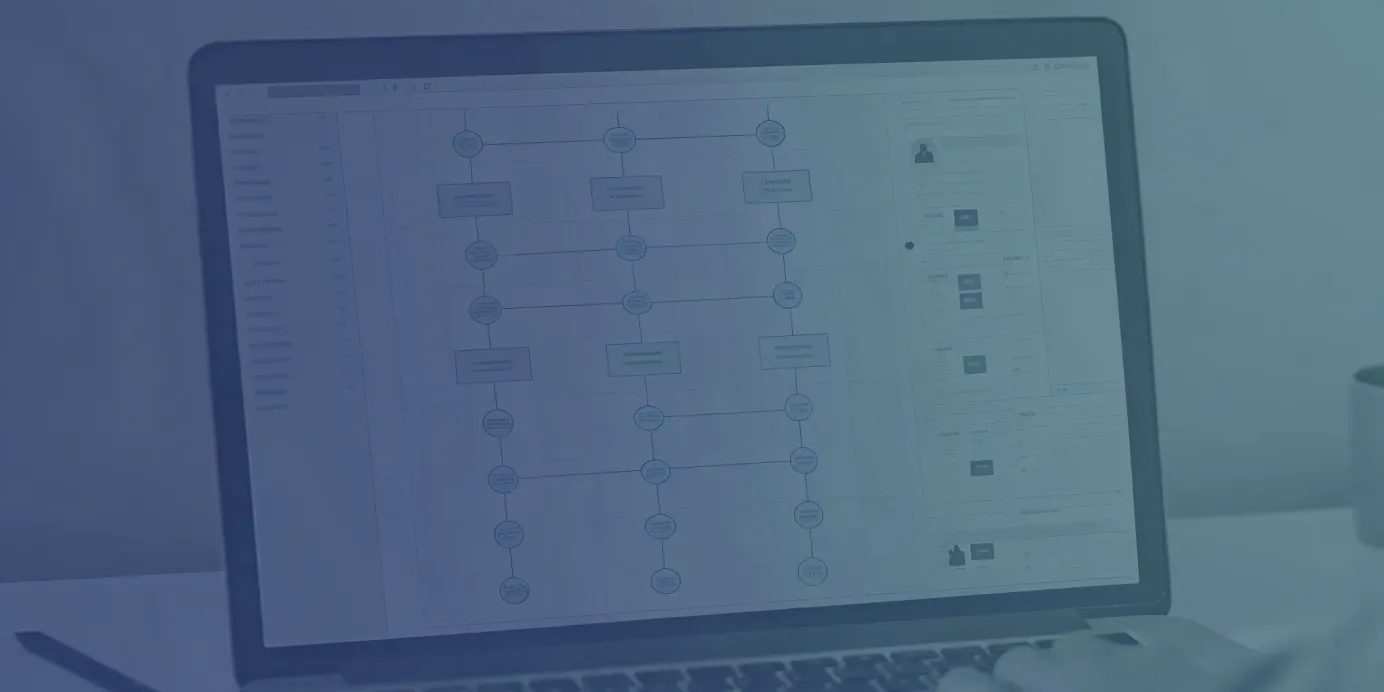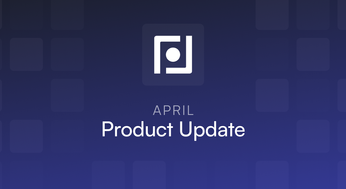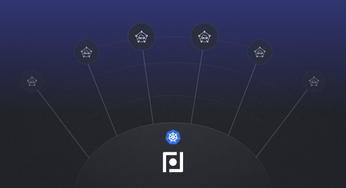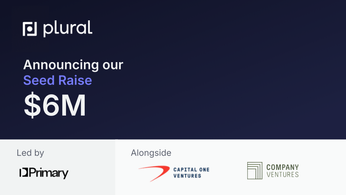
Kubernetes Managed Observability: A Practical Guide
Master Kubernetes managed observability with this comprehensive guide. Learn to monitor, troubleshoot, and optimize your Kubernetes deployments effectively.
Table of Contents
Kubernetes makes deploying and managing applications easier, but its complexity can make understanding system behavior tricky. Troubleshooting in a dynamic, containerized environment requires Kubernetes managed observability. It's not just about monitoring what happened, it's about understanding why. This guide provides the tools and techniques you need to gain deep insights into your Kubernetes deployments.
This post provides a practical guide to Kubernetes observability, covering everything from the fundamental principles and essential components to advanced techniques and future trends. Whether you're a seasoned Kubernetes administrator or just starting your journey, this guide will equip you with the knowledge and tools to effectively monitor, troubleshoot, and optimize your Kubernetes deployments.
Managed Observability in Kubernetes
Manage Kubernetes at scale through a single, enterprise-ready platform.
What is Managed Kubernetes?
Managed Kubernetes refers to a service offered by various cloud providers and third-party vendors that handles the heavy lifting of deploying, managing, and scaling Kubernetes clusters. Think of it as outsourcing your Kubernetes operations so you can focus on what matters most: building and deploying your applications. With managed Kubernetes, the provider takes care of the underlying infrastructure, including tasks like provisioning servers, configuring networking, and ensuring cluster security. This frees up your team to concentrate on development and innovation rather than getting bogged down in infrastructure management.
Benefits of Managed Kubernetes
Ease of Use and Reduced Operational Overhead
One of the primary advantages of managed Kubernetes is its simplicity. Providers offer intuitive interfaces and automated tools that streamline cluster operations. This significantly reduces the operational overhead for your team. As DigitalOcean points out in their comparison of unmanaged vs. managed Kubernetes, managed services typically come with better uptime guarantees and are much less complex to manage. This translates to less time spent on tasks like patching, monitoring, and troubleshooting, allowing your engineers to focus on delivering value through application development. For teams looking to simplify Kubernetes operations, managed services offer a compelling solution.
Automatic Updates and Patching
Staying up-to-date with the latest Kubernetes releases and security patches is crucial for maintaining a secure and stable environment. Managed Kubernetes services often automate this process, ensuring your clusters are always running the most secure and performant versions. This automation eliminates the need for manual intervention, reducing the risk of human error and freeing up your team from tedious maintenance tasks. This also helps ensure compliance with security best practices and industry regulations, simplifying audit processes and reducing compliance overhead.
Scalability and High Availability
Scaling your applications to meet fluctuating demand is essential for delivering a seamless user experience. Managed Kubernetes excels in this area, providing automated scaling capabilities that adjust resources based on real-time needs. This ensures high availability and consistent performance, even during peak traffic periods. As DigitalOcean highlights, managed Kubernetes can automatically scale your applications based on demand. This dynamic scaling capability is a major advantage for businesses that experience variable workloads, allowing them to optimize resource utilization and avoid overspending on infrastructure. This elasticity allows your infrastructure to adapt to changing demands, ensuring optimal performance and cost-efficiency.
Cost Considerations: Managed vs. Unmanaged
While managed Kubernetes offers numerous benefits, it's essential to consider the cost implications. Managed services typically involve a premium compared to self-managing your own clusters. However, it's crucial to factor in the hidden costs associated with the unmanaged approach. These costs often include the time and expertise required for setup, maintenance, and troubleshooting, which can quickly add up. Evaluating the total cost of ownership, including both direct and indirect expenses, is essential for making informed decisions.
Hidden Costs of Self-Managing Kubernetes
The allure of lower upfront costs with unmanaged Kubernetes can be deceptive. As DigitalOcean notes, while unmanaged might seem cheaper initially, the time and expertise needed to manage it can be very costly. Organizations often underestimate the resources required for tasks like cluster administration, security management, and 24/7 monitoring. These hidden costs can significantly impact your overall budget and divert valuable resources away from core business activities. For many organizations, the long-term benefits of managed Kubernetes, such as increased efficiency and reduced operational overhead, outweigh the initial cost premium. If you're looking for a streamlined and scalable approach to Kubernetes management, explore Plural's pricing plans to see how we can help simplify your Kubernetes operations. We offer a managed platform designed for enterprise-grade deployments, handling the complexities of Kubernetes so you can focus on building and deploying your applications.
Key Takeaways
- Comprehensive Kubernetes observability requires integrating logs, metrics, and traces. Set up centralized logging, collect key metrics from your deployments, and use tracing to understand request flow. Correlating these three data sources is crucial for effective troubleshooting and performance analysis.
- Select the right observability tools based on your specific needs and resources. Open-source tools like Prometheus and Grafana offer flexibility, while commercial platforms provide integrated solutions. Consider factors like scalability, cost, and your team's expertise when making your choice.
- Proactively address the operational challenges of Kubernetes observability. Develop strategies for managing large data volumes and controlling costs. Invest in training to build internal expertise and automate key processes like alert configuration and root cause analysis.
What is Kubernetes Observability?
Observability is key to managing Kubernetes's complexity. It's the practice of understanding your system's internal state by examining its external outputs. This allows you to debug production issues quickly, optimize performance, and confidently ship features.
Without robust observability, troubleshooting Kubernetes can feel like searching for a needle in a haystack. A well-implemented observability system provides a clear picture of your applications and infrastructure, allowing you to identify and address issues proactively.
Definition and Importance
Kubernetes observability goes beyond simple monitoring. Monitoring tells you what is happening (e.g., CPU usage is high), while observability helps you understand why. This "why" is crucial for effective incident response and performance tuning. With observability, you can pinpoint the root cause of problems—whether it's a faulty deployment, a resource bottleneck, or an unexpected traffic spike. This reduces downtime and improves the overall reliability of your applications. For mission-critical applications, comprehensive Kubernetes observability is a necessity.
Logs, Metrics, and Traces: The Three Pillars
Observability relies on three core data sources: logs, metrics, and traces. Logs provide a detailed record of events happening within your system, capturing everything from application errors and warnings to system-level messages.
Metrics are numerical representations of system performance, such as CPU usage, memory consumption, and request latency. They offer a quantitative view of your system's health.
Traces track the path of a single request as it flows through your distributed application. They help you understand the dependencies between different services and identify performance bottlenecks. By combining these three pillars, you gain a comprehensive understanding of your Kubernetes environment.
Challenges of Kubernetes Observability
Kubernetes has revolutionized application deployment and management, but its distributed nature introduces unique observability challenges. Traditional monitoring strategies often fall short in these dynamic containerized environments. Let's explore some key obstacles and how to address them.
Disparate Data Sources and the Need for Correlation
Effective Kubernetes observability requires more than simply collecting logs, metrics, and traces. The real power lies in correlating this data from various sources—containers, nodes, applications, and even CI/CD pipelines—to gain a comprehensive understanding of events within the cluster. For example, correlating slow response times with a specific pod's resource consumption can quickly pinpoint the root cause of a performance bottleneck.
Dynamic Nature of Kubernetes and its Impact
Traditional observability tools, designed for static environments, struggle to keep pace with Kubernetes's dynamic nature. Containers constantly spin up and down, and pods migrate between nodes. This ephemeral behavior necessitates tools specifically designed to handle the dynamism inherent in Kubernetes, where resources are treated as transient entities rather than persistent fixtures.
Lack of Centralized Data and the Need for Aggregation
Kubernetes, by default, lacks a centralized repository for logs and metrics. Data is scattered across multiple sources, requiring deliberate aggregation and correlation. Without a centralized logging and metrics pipeline, gaining a holistic view of the system becomes a significant challenge, hindering effective troubleshooting and analysis.
Limitations of Relying Solely on Managed Kubernetes Services
Managed Kubernetes services simplify cluster administration but often provide only basic alerting, falling short of comprehensive observability. While convenient, these services may lack the granular data and customization options necessary for deep insights into application and cluster performance. Supplementing these services with purpose-built observability tools is often crucial for robust monitoring and troubleshooting.
The Four Sins of Kubernetes Observability
Observe Inc. identifies four common pitfalls to avoid: simply aggregating logs without context, focusing solely on metrics, neglecting cluster-level impacts on applications, and relying only on the basic alerting provided by managed Kubernetes services. A holistic approach that integrates all three pillars of observability—logs, metrics, and traces—and considers both application and cluster-level insights is essential for avoiding these pitfalls and achieving true Kubernetes observability. For a deeper dive into these challenges, refer to their guide.
Kubernetes Observability Components
The core components of Kubernetes observability work together to provide a comprehensive view of your system.
Logging in Kubernetes
Logs provide a detailed, time-stamped record of events within your cluster. They capture everything from application errors and warnings to system-level messages. Effective log management is crucial for troubleshooting issues, identifying patterns, and auditing activity. Logs tell the story of what happened, when, and where. Connecting these data points is essential for understanding the relationships and events within your clusters, enabling you to pinpoint the root cause of problems quickly. This is especially important in dynamic Kubernetes environments, where applications are constantly scaling and changing.
For example, if a pod crashes, logs can help you determine why by showing the error messages that preceded the crash. Centralized logging solutions can aggregate logs from across your cluster, making it easier to search and analyze them.
Collect and Analyze Metrics
Metrics offer a quantitative view of your cluster's performance. They track resource usage (CPU, memory, disk I/O), application throughput, error rates, and other key indicators. Collecting and analyzing metrics allows you to monitor the health of your applications and infrastructure, identify trends, and make informed decisions about scaling and resource allocation. Metrics provide the "what" and "how much" of your cluster's behavior, complementing the "what happened" provided by logs.
For instance, a spike in CPU usage might indicate a performance bottleneck or a sudden increase in traffic. Combining these metrics with logs can help you gain a deeper understanding of the factors contributing to specific events and performance issues. This holistic approach is fundamental to effective Kubernetes observability.
Data Collection Methods
Choosing the right data collection method is fundamental to an effective Kubernetes observability strategy. Different methods offer varying levels of detail and resource consumption. Let's explore some common approaches:
Agent-Based Collection
Traditionally, agent-based methods involve deploying monitoring agents on each node or even within individual pods. While this approach can provide granular data, it comes with a significant overhead. Managing numerous agents across a distributed Kubernetes environment can become complex and resource-intensive. The agents themselves consume resources that could otherwise be used by your applications. Furthermore, deploying and updating these agents adds another layer of operational complexity. For these reasons, agent-based collection is often less desirable in large, dynamic Kubernetes deployments.
Metrics API
Kubernetes offers a built-in Metrics API, providing a readily available source of metrics data. This API offers basic metrics about cluster components and workloads, making it a convenient starting point for monitoring. However, the Metrics API provides a limited scope of data, often insufficient for comprehensive observability. It might be suitable for basic health checks and resource monitoring, but it won't give you the deep insights needed for complex troubleshooting or performance analysis. For more detailed metrics, you'll need to explore other methods, such as using a dedicated metrics server like Prometheus.
eBPF (Extended Berkeley Packet Filter)
eBPF has emerged as a powerful and efficient method for collecting a wide range of data within the Linux kernel. Using eBPF, you can collect detailed metrics, traces, and even logs with minimal overhead. eBPF programs run within the kernel, allowing them to tap into system events with high precision and efficiency. This approach avoids the resource consumption associated with traditional agents while providing deep insights into system behavior. For comprehensive Kubernetes observability, eBPF is often the preferred method, offering a balance between performance and detail. Tools like Cilium leverage eBPF for network and security observability in Kubernetes.
Distributed Tracing
In microservices architectures running on Kubernetes, requests often traverse multiple services. Distributed tracing follows these requests across service boundaries, providing insights into the latency and performance of each step. Tracing helps you identify bottlenecks, understand dependencies between services, and optimize the overall performance of your applications. It adds the "why" to the equation, revealing the sequence of events leading to a particular outcome.
For example, if a user transaction is slow, tracing can help you pinpoint which service in the call chain is causing the delay. By correlating traces with logs and metrics, you can gain a complete picture of how requests flow through your system and pinpoint the source of performance issues or errors. This level of visibility is essential for managing complex, distributed applications in Kubernetes.
Implement Observability in Kubernetes
Getting observability right in Kubernetes requires a structured approach. It's not just about having tools; it's about using them effectively. This section outlines the key steps to implement a robust observability framework for your Kubernetes deployments.
Set Up Logging Infrastructure
Centralized logging is crucial for managing the sheer volume of data generated by Kubernetes. Without a centralized system, sifting through logs across multiple pods and services becomes a nightmare. Implement a logging pipeline that collects, processes, and stores logs from all your Kubernetes resources.
Consider tools like Fluentd or Logstash for collecting logs and Elasticsearch or ClickHouse for storage and analysis. This centralized logging infrastructure provides a single source of truth for troubleshooting and analysis. Connecting these data points helps understand the relationships and events within your clusters, a key aspect of effective observability.
Configure Metrics Collection
Set up a metrics pipeline using tools like Prometheus or the Kubernetes Metrics Server. Configure these tools to collect metrics from your deployments, services, and other Kubernetes objects.
Remember, effective Kubernetes observability requires a holistic approach. It's not enough to just collect metrics; you need to analyze them to understand the relationships between different data points and identify the root causes of problems. This holistic approach allows you to monitor the performance and health of your applications, whether they're running on-premises or in the cloud.
Integrate Tracing Solutions
Tracing provides insights into the flow of requests across your distributed system. It helps you pinpoint performance bottlenecks and understand how different services interact. Integrate a tracing solution like Jaeger or Zipkin into your Kubernetes deployments. Instrument your applications to emit trace data, allowing you to follow requests as they travel through your system. This helps you identify latency issues and understand the dependencies between your services.
While open-source tools offer flexibility, the challenge lies in integrating them effectively. Choosing the right tracing tools is crucial, as no single solution covers every aspect. Prioritize solutions that best fit your needs and integrate seamlessly with your existing infrastructure.
Monitor Holistically
Finally, bring everything together with a holistic monitoring strategy. Use a dashboarding tool like Grafana to visualize your logs, metrics, and traces in a single pane of glass. This unified view provides a comprehensive understanding of your system's health and performance. Set up alerts based on key metrics and logs to proactively identify and address issues.
Observability isn't just about reacting to problems; it's about proactively ensuring your services are running as expected. Integrating observability into your deployment process builds confidence and allows you to optimize your applications effectively.
Best Practices for Kubernetes Observability
Observability is more than just having tools; it's about implementing them effectively. These best practices will help you get the most out of your Kubernetes observability setup.
Design for Scalability
Kubernetes deployments can grow rapidly. Your observability stack needs to handle increasing data volumes and query loads without impacting performance. Your observability system should scale alongside your cluster to provide consistent insights regardless of size. This scalability also applies to multi-cluster environments. Kubernetes observability tools can provide a unified view across these disparate environments, allowing you to monitor the performance and health of both on-premises and cloud-based components.
Implement Effective Alerting
Alerting is crucial for proactive monitoring. Well-defined alerts notify you of potential issues before they impact users. Focus on creating actionable alerts. Instead of generic warnings, configure alerts that pinpoint specific problems and their likely causes. For example, an alert triggered by high CPU usage should identify the affected pod and deployment. This allows for quicker diagnosis and remediation. Observability enables DevOps teams to monitor their Kubernetes environment proactively and detect issues early. Early detection helps prevent issues from impacting end-users and avoid potential downtime.
Configuring Context-Based Alerts
Generic alerts like "high CPU usage" offer little value in a complex Kubernetes environment. You need context. Instead of just knowing something is wrong, your alerts should tell you precisely what is wrong and where. This means configuring alerts that include details like the affected namespace, deployment, pod, and even the specific container. For example, an alert should say "High CPU usage on pod 'web-server-7' in deployment 'website' in namespace 'production'," not just "High CPU usage." This level of detail enables faster troubleshooting and reduces the time it takes to pinpoint the root cause.
Consider enriching your alerts with additional context from your metrics and logs. If you see high CPU usage, include the corresponding request rate or error rate in the alert. This correlation can provide immediate clues about the underlying cause. For instance, a spike in CPU alongside a surge in 500 errors points towards an application issue, whereas high CPU with normal request rates might suggest a resource leak. By providing this context directly in the alert, you empower your team to respond more effectively. A well-implemented observability system empowers you to identify and address issues proactively.
Ensure Data Security and Compliance
Observability data often contains sensitive information. To protect it, implement appropriate security measures. These include encrypting data in transit and at rest, controlling access with role-based access control (RBAC), and ensuring compliance with relevant regulations like GDPR or HIPAA.
Consider the security implications of your chosen tools and platforms. Open-source tools may require additional configuration for robust security. The primary challenge with implementing a fully open-source observability solution is that no single tool covers all aspects, potentially increasing complexity and security risks.
Key Security Threats and Vulnerabilities in Kubernetes
Kubernetes security is paramount. A significant number of organizations report experiencing security incidents within their Kubernetes deployments, often leading to delayed releases and potential vulnerabilities. Attack vectors can range from misconfigurations and vulnerabilities in container images to compromised credentials and insecure network access. Understanding these threats is the first step towards building a robust security posture.
One common vulnerability stems from using outdated or unpatched container images. Regularly scanning images for known CVEs is crucial. Another area of concern is network security. Without proper network policies, communication between pods and services can be exploited. Implementing strong network controls is essential to limit attack surfaces and prevent unauthorized access.
Best Practices for Securing Your Clusters
Securing your Kubernetes clusters requires a multi-layered approach, addressing security concerns at various stages: build, deploy, and runtime. During the build phase, focus on secure image creation and vulnerability scanning. At deploy time, implement robust access controls and network policies. In runtime, continuous monitoring and threat detection are essential.
Tigera, the creators of Calico, offer a comprehensive guide outlining eight best practices for Kubernetes security, covering these crucial stages. Their insights provide a valuable framework for establishing a robust security strategy. By addressing security at each stage, you can minimize risks and protect your Kubernetes deployments effectively.
Image Scanning
Before deploying any container image, scan it for known vulnerabilities (CVEs). Using a vulnerability scanner helps identify potential weaknesses within your images, allowing you to address them before they become exploitable in your cluster. Integrating image scanning into your CI/CD pipeline automates this crucial security step.
Several tools are available for image scanning, offering varying levels of depth and integration. Choose a tool that aligns with your specific needs and workflow. Regularly scanning images and acting on discovered vulnerabilities is a fundamental practice for maintaining a secure Kubernetes environment. Plural can help automate these processes.
Host OS Hardening
The underlying host operating system plays a critical role in Kubernetes security. A hardened host OS minimizes the potential for privilege escalation attacks. This involves configuring the OS with minimal privileges for containers, limiting access to system resources, and applying regular security updates.
Choosing a minimal base image for your containers further reduces the attack surface. By minimizing the software installed on the host and within containers, you limit potential vulnerabilities and improve the overall security posture of your Kubernetes deployments. Tools like Plural can simplify these configurations.
Network Security Controls
Implementing robust network security controls is crucial for protecting your Kubernetes cluster. Kubernetes-native network policies, provided by tools like Calico and Weave Net, allow you to define granular rules for communication between pods and services. This helps prevent unauthorized access and limit the impact of potential breaches.
Service meshes like Istio and Linkerd enhance network security by providing features like traffic encryption, authentication, and authorization. Using a service mesh adds another layer of protection, ensuring secure communication within your cluster. Consider integrating a service mesh if your application requires advanced network security features. These can be easily deployed and managed with Plural.
Runtime Threat Defense
Protecting your Kubernetes cluster requires ongoing monitoring and threat detection. Runtime threat defense mechanisms analyze system activity, logs, and network traffic to identify and respond to security threats in real time. These mechanisms can leverage machine learning and threat intelligence to detect anomalies and malicious behavior.
Implementing runtime security tools helps protect your cluster from emerging threats and zero-day vulnerabilities. These tools provide an additional layer of defense, complementing your existing security measures and ensuring the ongoing integrity of your Kubernetes deployments. Consider using a platform like Plural to manage and secure your Kubernetes deployments at scale.
Leverage eBPF-based Tools
eBPF (extended Berkeley Packet Filter) is a powerful technology for gaining deep insights into your Kubernetes clusters. eBPF-based tools can collect detailed performance data with minimal overhead, making them ideal for production environments. They can capture metrics, trace requests, and even analyze network traffic within your cluster. Consider integrating eBPF-based tools like Cilium and Falco to enhance your observability capabilities. eBPF offers significant improvements in efficiency and resource usage compared to traditional methods.
Correlate Data Sources
Effective observability requires correlating data from various sources. This means connecting metrics, logs and traces to gain a comprehensive understanding of your system's behavior. For example, correlating a spike in latency with corresponding logs and traces can help pinpoint the root cause of the issue. Look for tools and platforms that facilitate data correlation. This might involve using a centralized logging system, a metrics platform with visualization capabilities, and a distributed tracing system that integrates with both.
Connecting data points to better understand relationships and events within Kubernetes clusters is central to this process. This holistic approach enables faster troubleshooting and more effective performance optimization.
The Importance of Context and Correlation
Kubernetes observability goes beyond simple monitoring. Monitoring tells you what is happening (e.g., high CPU usage), while observability helps you understand why. This “why” is crucial for effective incident response and performance tuning. Effective observability requires correlating data from various sources. This means connecting metrics, logs, and traces to gain a comprehensive understanding of your system’s behavior.
For example, correlating a spike in latency with corresponding logs and traces can help pinpoint the root cause of an issue. Look for tools and platforms that facilitate this data correlation. A good starting point is a centralized logging system, a metrics platform with visualization capabilities, and a distributed tracing system that integrates with both. Connecting these data points helps you understand the relationships and events within your clusters, enabling you to quickly pinpoint the root cause of problems. A well-implemented observability system provides a clear picture of your applications and infrastructure, allowing you to identify and address issues proactively.
Tools and Platforms for Kubernetes Observability
Kubernetes observability relies heavily on tooling. Choosing the right tools for your specific needs is crucial for effectively monitoring, troubleshooting, and optimizing your cluster. Let's explore popular open-source and commercial options and offer guidance on selecting the best fit.
Open-Source Solutions (Prometheus, Grafana, ELK Stack)
Open-source tools offer a flexible and often cost-effective way to achieve robust Kubernetes observability. The combination of Prometheus, Grafana, and the ELK stack is a common and powerful choice.
Prometheus excels at collecting metrics from your Kubernetes deployments, offering a multi-dimensional data model and a powerful query language (PromQL). Visualize this data with Grafana, creating insightful dashboards to track key performance indicators.
For log management and analysis, the ELK stack (Elasticsearch, Logstash, and Kibana) provides a robust solution for aggregating, searching, and visualizing logs from across your cluster. While requiring some upfront configuration, these tools provide a solid foundation for most observability needs. Fluentd is another popular open-source option for collecting and forwarding logs, often used in conjunction with the ELK stack.
For tracing, Jaeger and OpenTelemetry offer valuable insights into the flow of requests within your applications, helping pinpoint performance bottlenecks and latency issues.
Heapster, InfluxDB, and Grafana
While no longer actively maintained, Heapster, InfluxDB, and Grafana once formed a popular open-source monitoring stack for Kubernetes. Heapster collected metrics, gathering data from containers and Kubernetes components. This data flowed into InfluxDB, a time-series database designed for handling metrics. Grafana then provided a visualization layer, enabling users to build dashboards and alerts based on the collected metrics. This combination offered a relatively simple approach to gaining visibility into cluster performance. However, its reliance on deprecated components makes it less suitable for modern Kubernetes environments. Modern alternatives like Prometheus and Thanos offer better scalability and integration with the broader Kubernetes ecosystem.
Built-in Kubernetes Tools
Kubectl, the command-line interface for Kubernetes, provides commands for viewing logs, events, and resource usage. These tools are useful for basic troubleshooting, offering immediate access to crucial information. For instance, the kubectl logs command allows developers to inspect individual container logs, aiding in identifying application-level issues. Similarly, kubectl top displays resource usage, providing a quick overview of CPU and memory consumption. However, these built-in tools lack the aggregation and analysis capabilities needed for managing complex deployments at scale. Retrieving logs from numerous pods requires manual effort, and correlating these logs with other metrics can be challenging. While valuable for initial investigations, kubectl’s observability features are best supplemented with more comprehensive logging, metrics, and tracing solutions for production environments.
Commercial Observability Platforms
While open-source tools offer flexibility, commercial platforms often provide a more integrated and streamlined experience. They typically offer features like pre-built dashboards, automated alerting, and simplified deployment. Cloud providers offer their own managed observability solutions, such as Google Cloud Operations, AWS X-Ray, Azure Monitor, and IBM Instana Observability.
These platforms are often tightly integrated with their respective cloud environments, simplifying setup and management, particularly for organizations running large Kubernetes deployments. These platforms can offer significant advantages in terms of performance, scalability, and ease of use. Datadog and New Relic are also popular choices, providing comprehensive monitoring and observability capabilities.
Choose the Right Tool Stack
Selecting the right observability tool stack depends on several factors, including the size and complexity of your Kubernetes deployments, your team's expertise, and your budget. Start by clearly defining your observability requirements. What do you need to monitor? What are your key performance indicators? Consider the trade-offs between open-source and commercial solutions.
Open-source offers flexibility and cost savings but may require more upfront effort to configure and maintain. Commercial platforms offer a more streamlined experience but can be more expensive. Don't over-optimize for operations while neglecting the developer experience. Ensure your chosen tools integrate well with your existing workflows and provide actionable insights for both developers and operators. Consider the maturity of the tools and the community support available, especially when choosing open-source options. Finally, remember that your observability needs may evolve, so choose tools that can scale and adapt.
Vendor-Specific and Dedicated Platforms
When evaluating observability tools for Kubernetes, you'll encounter both vendor-specific and dedicated platforms. Vendor-specific tools, often provided by cloud providers like Google Cloud Operations or AWS X-Ray, offer deeper integration with their respective ecosystems. This can simplify setup and management, especially if your Kubernetes deployments reside within that specific cloud environment. These tools might also offer specialized features and optimizations tailored to the vendor's infrastructure.
However, this tight integration has trade-offs. Vendor-specific tools can limit your flexibility if you work across multiple cloud providers or hybrid environments. Groundcover notes that vendor-specific tools, while feature-rich, may only work with certain Kubernetes distributions. This lock-in can become problematic if you migrate or expand your infrastructure later. If you're pursuing a multi-cloud or hybrid approach, dedicated observability platforms might be a better fit.
Dedicated observability platforms, like Datadog, New Relic, or Plural, are designed to work across various environments. These platforms offer broader integrations and support multiple Kubernetes distributions, providing greater flexibility. Groundcover describes these platforms as the most comprehensive option, often supporting multiple environments and providing advanced features. They typically offer pre-built dashboards, automated alerting, and simplified deployment, saving you time and effort compared to configuring open-source tools. However, dedicated platforms often cost more than open-source or vendor-specific tools.
Choosing between vendor-specific and dedicated platforms depends on your specific needs and priorities. Factors like the complexity of your deployments, your team's expertise, your budget, and your long-term infrastructure strategy all influence your decision. Groundcover suggests considering the size and complexity of your Kubernetes deployments, your team's expertise, and your budget when selecting an observability tool stack. Carefully evaluate your requirements and consider the trade-offs before choosing.
Overcome Kubernetes Observability Challenges
Implementing a robust observability strategy comes with its own set of hurdles. Let's break down some common challenges and how to address them.
Manage Data Complexity and Volume
Kubernetes generates a massive amount of data from various sources—logs, metrics, traces, events, and more. The sheer volume and variety can quickly become overwhelming. Efficiently collecting, processing, and storing this data requires careful planning. Start by defining clear objectives for your observability efforts. What specific questions are you trying to answer? This focus helps prioritize which data to collect and reduce noise.
Consider implementing sampling strategies to further reduce data volume without sacrificing crucial insights. For example, you might sample traces based on request latency or error rates.
Optimize Costs
Observability tools themselves can contribute to infrastructure costs. Storing and querying large datasets can quickly rack up expenses. To keep costs in check, evaluate different pricing models for observability platforms. Some platforms charge based on data ingestion, while others charge based on storage or query volume. Understanding these models helps you choose the most cost-effective solution for your needs.
Consider using data retention policies to automatically delete older data that is no longer relevant. This not only reduces storage costs but also improves query performance. Open-source tools like Prometheus and Grafana offer robust functionality without licensing fees. Combining open-source tools with cost-effective managed services can provide a good balance between performance and affordability.
Streamlining Costs of Data Storage and Ingestion
Kubernetes observability is essential, but the costs associated with storing and querying large datasets can quickly become a concern. Implementing a cost-effective observability strategy requires a multi-faceted approach. Start by carefully evaluating the pricing models of different observability platforms. Some platforms charge based on data ingestion volume, which can be problematic if you’re dealing with high-volume data streams. Others charge based on storage or query volume. Understanding these models is the first step in controlling costs. For example, if your primary concern is long-term log storage for compliance, a platform with lower storage costs might be preferable.
Next, implement data retention policies. Don’t keep data around longer than you need it. Set up automated processes to delete older data that's no longer relevant for analysis. This not only reduces storage costs but also improves query performance by reducing the amount of data to scan. For example, you might keep logs for 30 days, metrics for 90 days, and traces for a shorter period, depending on your specific needs. Align these policies with your organization's compliance and auditing requirements.
Another key strategy for managing data volume is sampling. Instead of collecting every single data point, implement sampling strategies to collect a representative subset. For instance, you could sample traces based on request latency or error rates, focusing on the requests most likely to reveal performance bottlenecks or errors. This approach reduces data volume without sacrificing crucial insights. Similarly, consider aggregating metrics at different levels of granularity. While detailed, high-frequency metrics are useful for real-time analysis, you might only need lower-resolution, aggregated data for long-term trend analysis. This reduces storage needs and improves query performance for long-term reporting.
Address Skills Gaps
Kubernetes and its associated observability ecosystem require specialized knowledge. Finding and retaining engineers with the necessary expertise can be a challenge. Invest in training and development programs to upskill your existing team. Plural's resources offer valuable insights into Kubernetes management best practices. Encourage knowledge sharing within your team through internal workshops and documentation.
When hiring, prioritize candidates with a strong understanding of cloud-native technologies and a willingness to learn. Consider partnering with managed service providers or consultants to supplement your team's expertise during the initial implementation or for ongoing support. Building a strong internal knowledge base can also help mitigate the impact of employee turnover.
Integrate Multiple Tools Effectively
A comprehensive observability strategy often involves multiple tools, each specializing in a particular area (e.g., logging, metrics, tracing). Integrating these tools seamlessly is crucial for a unified view of your system. Look for tools that offer native integrations or support open standards like OpenTelemetry. This simplifies the process of connecting different components and ensures interoperability.
When selecting tools, consider their API capabilities and support for automation. This allows you to programmatically configure and manage your observability stack, reducing manual effort and improving consistency. For example, you can automate the deployment and configuration of monitoring dashboards using infrastructure-as-code tools like Terraform. Automating these processes also helps ensure that your observability setup remains consistent across different environments.
Advanced Kubernetes Observability Techniques
As your Kubernetes deployments grow, basic monitoring isn't enough. You need advanced techniques to proactively identify issues and minimize downtime. This section explores three key areas: anomaly detection, automated root cause analysis, and service mesh integration.
Anomaly Detection with Machine Learning
Traditional alerting thresholds often miss the nuances of complex systems. Machine learning offers a more sophisticated approach. By training models on historical performance data, you can identify unusual patterns and anomalies that might signal emerging problems. These models learn your applications' baseline behavior and flag deviations, even if they don't breach predefined thresholds.
This proactive approach allows you to address issues before they impact users. Early detection is crucial for preventing outages and minimizing revenue loss. This allows teams to respond quickly and efficiently, maintaining service reliability.
Automate Root Cause Analysis
Troubleshooting in Kubernetes can be time-consuming, especially with distributed systems. Automating root cause analysis streamlines this process. By correlating metrics, logs, and traces, you can quickly pinpoint the source of an issue. Integrating automation tools into your observability pipeline automatically analyzes incidents and provides actionable insights. This automation frees your team from manual investigations, allowing them to focus on resolving problems.
Integrate Service Mesh for Enhanced Visibility
A service mesh provides a dedicated infrastructure layer for managing inter-service communication. Integrating a service mesh into your observability strategy offers granular visibility into these interactions. This lets you track requests, identify latency bottlenecks, and understand dependencies between services. A service mesh provides the rich data necessary for these deeper insights, enabling you to optimize application performance and identify potential issues before they affect users.
Related Articles
- The Essential Guide to Monitoring Kubernetes
- Plural | Kubernetes Dashboard
- The Quick and Dirty Guide to Kubernetes Terminology
Managed Observability in Kubernetes
Manage Kubernetes at scale through a single, enterprise-ready platform.
Frequently Asked Questions
How does observability differ from monitoring?
Monitoring tells you what is wrong, like high CPU usage. Observability helps you understand why it's happening, connecting the dots between different metrics, logs, and traces to pinpoint the root cause. This deeper understanding is crucial for effective troubleshooting and performance optimization in complex Kubernetes environments.
What's the best way to get started with observability in Kubernetes?
Start by defining your specific needs and goals. What do you want to achieve with observability? Then, choose the right tools for the job. A combination of open-source tools like Prometheus, Grafana, and the ELK stack is a good starting point. Alternatively, consider a commercial platform if you prefer a more integrated and managed solution. Remember, effective observability requires a holistic approach, combining metrics, logs, and traces for a complete picture.
How can I manage the large volumes of data generated by Kubernetes observability?
Implement efficient data collection and storage strategies. Use tools like Fluentd and Prometheus to aggregate and store metrics and logs. Consider sampling techniques to reduce data volume without losing critical insights. Also, define clear data retention policies to automatically delete older data. This not only saves storage costs but also improves query performance.
What are some advanced observability techniques for Kubernetes?
Explore anomaly detection using machine learning to proactively identify unusual patterns and potential issues. Correlating metrics, logs, and traces automate root cause analysis, quickly pinpointing the source of problems. Consider integrating a service mesh for deeper insights into inter-service communication and performance.
What are the future trends in Kubernetes observability?
AI and machine learning will become increasingly important in automating data analysis and providing predictive insights. Observability as Code (OaC) will streamline the management of observability configurations. Tighter integration with GitOps and CI/CD pipelines will ensure that observability is baked into the entire development lifecycle.
Plural and Managed Kubernetes Observability
Managing Kubernetes at scale introduces significant observability challenges. The dynamic nature of containerized environments, coupled with the distributed nature of microservices, makes understanding system behavior complex. Traditional monitoring approaches often fall short. This is where a managed Kubernetes platform like Plural shines, offering a unified approach to observability.
Streamlining Kubernetes Management with Plural
Managed Kubernetes solutions simplify the complexities of deploying and managing Kubernetes clusters. Plural streamlines this process further by providing a single pane of glass for managing your entire Kubernetes fleet. This centralized platform simplifies deploying and managing observability tools across all your clusters, ensuring consistent data collection and analysis. With Plural, you can easily deploy and manage your preferred observability stack, whether it's open-source tools like Prometheus and Grafana or commercial platforms like Datadog. This reduces operational overhead and allows your team to focus on extracting valuable insights from your observability data rather than wrestling with infrastructure.
Beyond simplifying deployment, Plural enhances security by using a secure agent-based architecture. This eliminates the need for direct access to your workload clusters, minimizing your attack surface. The Plural agent communicates with the management cluster via egress networking, ensuring that sensitive observability data is transmitted securely. This secure architecture is crucial for maintaining the integrity and confidentiality of your observability data, especially in regulated industries.
Integrating Observability Tools with Plural
Effective observability requires correlating data from various sources. Plural facilitates this by seamlessly integrating with a wide range of observability tools. Whether you prefer open-source solutions like Prometheus for metrics, Logstash for log collection, and Jaeger for tracing, or commercial platforms like Datadog and New Relic, Plural provides the flexibility to choose the tools that best suit your needs. Plural's integration capabilities extend to tools like Fluentd and ClickHouse, providing a comprehensive solution for collecting, storing, and analyzing your observability data. For example, you could use Fluentd to collect logs from your applications, forward them to ClickHouse for long-term storage and analysis, and then visualize this data in Grafana.
Plural's GitOps-based approach further streamlines the integration process. You can manage your observability configurations as code, ensuring consistency and reproducibility across your entire fleet. This approach simplifies updates and rollbacks, reducing the risk of errors and improving the overall reliability of your observability pipeline. By treating your observability configurations as code, you can leverage the same workflows and best practices you use for application development, further enhancing efficiency and collaboration within your team. This allows you to version control your observability setup and easily revert to previous configurations if needed.
Newsletter
Join the newsletter to receive the latest updates in your inbox.









